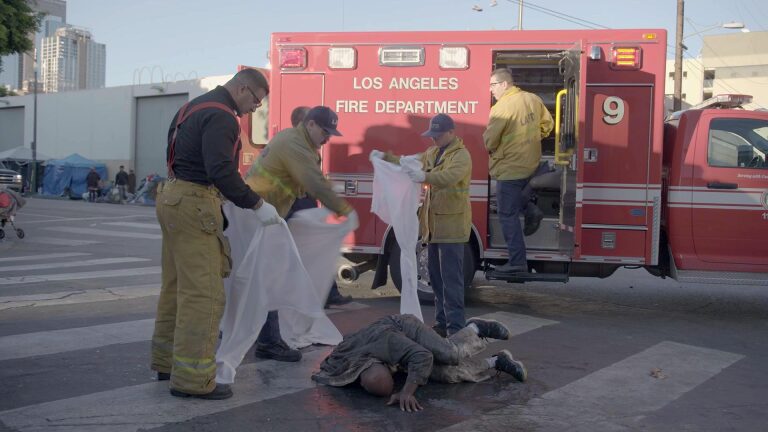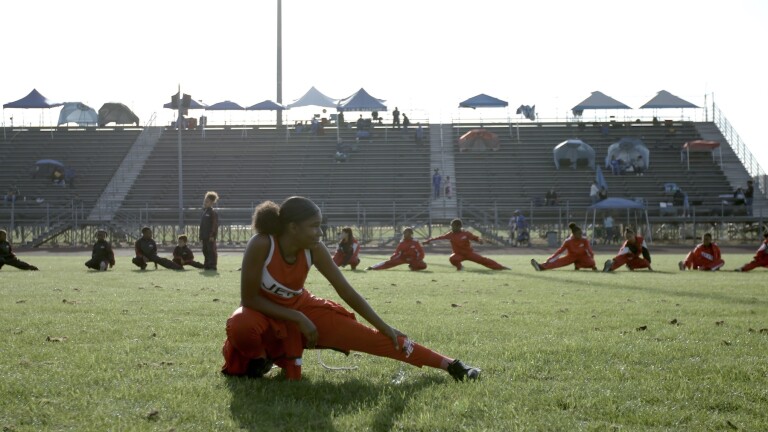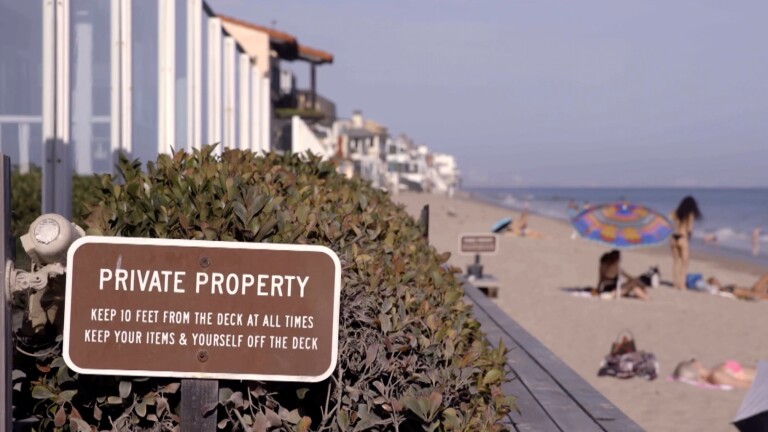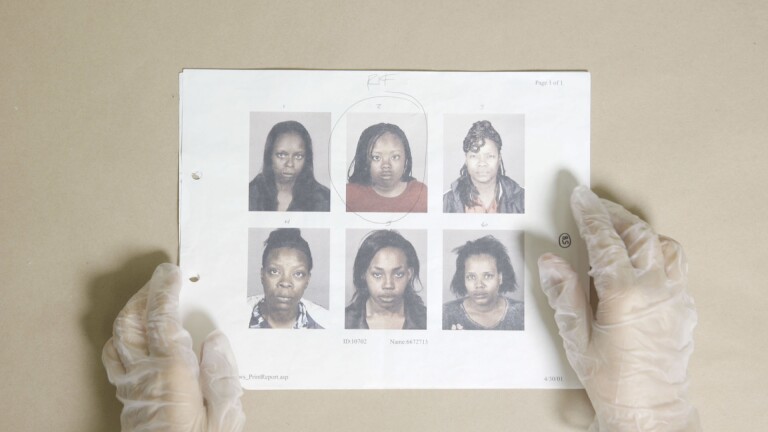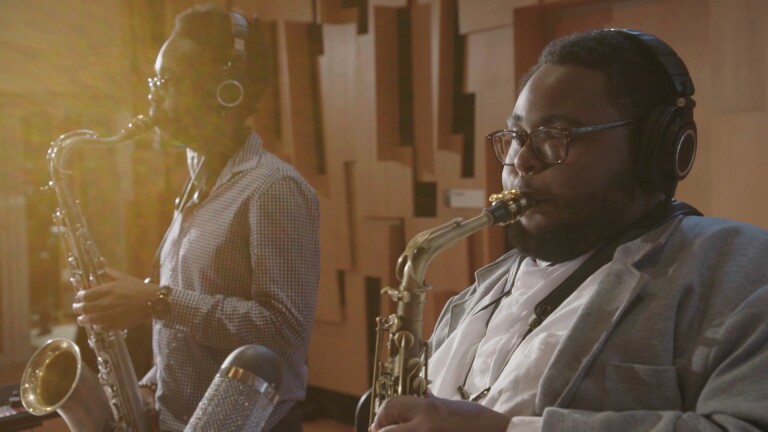Special Report: Porter Ranch Gas Leak Aftermath
Watch Part 1 here.
On Oct. 23, 2015, workers at a SoCalGas facility in the hills north of Los Angeles detected a leak. One of the 115 natural gas wells at the Aliso Canyon underground reservoir had developed a leak and was spewing methane gas into the atmosphere. Over the next three months it would become the biggest natural gas leak in U.S. history.
It would also cause 6,000 Porter Ranch residents to move out of their homes temporarily, complaining of nosebleeds, headaches and other health problems. Two Porter Ranch schools would be shut down. SoCalGas would come under intense scrutiny. And the leak would spew enough greenhouse gasses into the atmosphere to undo a year’s worth of California greenhouse gas reductions.
TIMELINE: Porter Ranch Gas Leak
Residents, political leaders and environmentalists demanded answers from SoCalGas and government regulators. How did this happen? Could it happen again? What will be done to prevent future leaks? Are there long-term health effects? What will it mean for property values? Should Aliso Canyon be shut down completely?
Reporter Derrick Shore talks to residents, SoCalGas executives, environmentalists, activists and politicians to get answers to these questions in this special half-hour edition of SoCal Connected.
Featuring Interviews With:
- Sam Kojaoghlanian, resident
- Anna Kojaoghlanian, resident
- Gabriel Khanlian, resident and activist
- Maureen Capra, Porter Ranch homeowner
Transcript
Val Zavala: Hello, I’m Val Zavala. Welcome to this Special Report from SoCal Connected, on the massive gas leak near Porter Ranch. Home at last.
Father: Tonight’s the night we’re actually going to be in our own bed.
Val Zavala: Family life getting back to normal after the worst natural gas disaster in U.S. history.
L.A. City Councilman Mitch Englander: This will never happen again.
Val Zavala: The leak is now sealed, but does it end here?
Realtor: Can the mountain blow up. That’s been the number one thing everyone’s been worried about.
SoCalGas spokesperson Gillian Wright: It cannot explode.
Val Zavala: What’s the impact on property values?
Homeowner at public hearing: I want you, Mr. Cho (SoCalGas executive), to buy my house for $850,000.
Val Zavala: And our environment?
Environmental Scientist Stephen Conley: The problem is just the global effect of adding this much methane into the environment.
Val Zavala: And what does it mean for our energy future?
SoCalGas spokesperson Gillian Wright: Aliso Canyon holds two months of supply for all of southern California.
Protesters: Shut it down, shut it down…
Val Zavala: Those are the questions we’ll be answering tonight in this Special Report from SoCal Connected on the natural gas leak near Porter Ranch. Derrick Shore has our story.
Derrick Shore: Porter Ranch is a community of 30-thousand. Nice homes, good schools, a great place to raise a family.
(Clip from the movie, “E.T. The extra-terrestrial”: "Tell me when it's over.")
Derrick Shore: It's famous for being the site of the Steven Spielberg blockbuster, "E-T." But on October 23rd, it became infamous. That's when a natural gas well at nearby Aliso Canyon started to leak.
Day 1: October 23, 2015 : Leak detected
Derrick Shore: The gas would spew from a broken pipe for 112 days and become the worst environmental disaster since the BP oil spill. Since natural gas is invisible no one could see the leak until this infrared video went viral. And Southern California Gas, which owns the facility, did not tell the public about the leak for several days. It wasn't long before concerned residents began moving out of their homes. Sam and Anna Kojaoghlanian were among the first to leave.
Derrick Shore: Hey, Sam. How's it goin'? Good to see you. How's everything going?
Sam Kojaoghlanian: Good. Come on in.
Derrick Shore: For more than three months, they camped out with their three kids and sam's father in this Woodland Hills hotel. Hey guys!
Kids: Hi!
Derrick Shore: It wasn't exactly a vacation.
Sam Kojaoghlanian: So, this is pretty much it. We have my daughter doing homework with my wife. This is our kitchen pretty much.
Derrick Shore: Wow!
Sam Kojaoghlanian: Microwave, some water, some essentials, things like that for tea.
Derrick Shore: So, that's your kitchen?
Sam Kojaoghlanian: Yeah, this is it. This is where they do their homework. One desk that they have to sometimes fight for space to write.
Derrick Shore: So, this is the room for sleeping and homework and eating and playtime. This has got to be stressful, I would imagine, for everyone. How are the kids doing at school? How is your wife doing?
Sam Kojaoghlanian: Um, you know it's very stressful, it's very tight. We don't have privacy, we don't have our space like we did at home. The kids' grades are suffering...
Derrick Shore: Despite the stress and cramped quarters, they felt safer here than at home. Like their neighbors, they'd been having physical reactions to the smell of chemicals added to natural gas.
Sam Kojaoghlanian: Nose bleeds, headaches…
Anna Kojaoghlanian: Well, it started um with my youngest well my middle son. Um he was getting nosebleeds and he doesn't normally get nose bleeds. A lot of different symptoms. We felt them all throughout our family and we had to leave.
Derrick Shore: About a third of the Porter Ranch residents moved out while the gas continued to leak. That's close to 10,000 people in hotel rooms and short-term rentals, paid for by SoCalGas.
Gillian Wright/SoCalGas spokesperson: there clearly are short-term symptoms that some people experience from the odor and those are real and they're disruptive and they're uncomfortable and have been very difficult for some people.
Derrick Shore: Gillian Wright - a SoCal Gas executive - says the company regrets customers' symptoms. But she believes families have nothing to worry about.
Gillian Wright: We really have to rely on the health experts. What the L.A. County Dept. of Public Health has said and what the State Office of Environmental Health Hazard Assessment have said is that there's no evidence that there's going to be long-term health effects from exposure to these substances at the concentrations that they're at.
Anna Kojaoghlanian: Can you believe them? Are they being honest?
Derrick Shore: Do you believe them?
Anna Kojaoghlanian:I don't know! I can't because there are just so many unknowns still.
Derrick Shore: The L.A. School District shared that concern. In mid-December, it closed two Porter Ranch schools, and re-located nearly two thousand students to other schools several miles from the leak.
Gabriel Khanlian: Pretty much the whole mountain back there is SoCalGas.
Derrick Shore: Gabriel Khanlian moved out of his home...and into... the role of community activist.
Gabriel Khanlian: Never did I ever think I would be standing here today, making my call to SoCalGas to stop the leak and shut it down.
Protesters: Shut it down now. Now!
Derrick Shore: So when you purchased the land and built your home, you had no idea that a gas well was here?
Gabriel Khanlian: No idea.
Derrick Shore: Reporter: Normally, Gabriel runs a small business. But, throughout the crisis, instead of fulfilling orders... He monitored air quality data. When you have a reading like this on the chart I would imagine the methane smell is....
Gabriel Khanlian: Smells like strong rotten eggs.
Derrick Shore: Strong rotten eggs.
Gabriel Khanlian: Mixed with sulfur. There has not been any long-term testing on the mercaptans, benzene, the methane, so that part worries me significantly...
Derrick Shore: Because no one really knows what the long-term effects could be.
Gabriel Khanlian: Exactly. So, we're pretty much the test objects in porter ranch.
Maureen Capra/resident: Let’s go look at our well.
Derrick Shore: Wow, so you can really see it from your front yard?
Maureen Capra: It’s right up there. The one with the red top.
Derrick Shore: Wow!
Maureen Capra: It's about a mile away. A little more than a mile. A little too close I'd say. Too close for comfort.)
Derrick Shore: Maureen Capra has a direct view of Aliso Canyon. She, too, believes she got sick from smelling the chemicals in the gas. And yet, she decided to stay. Why have you not chosen to leave?
Maureen Capra:This is my home. I've been here 40 years it is hard for me to leave my home and I don't want to go sit in a hotel.)
Derrick Shore: Instead, she remained indoors as much as possible.
Maureen Capra: It's like staying in prison kind of in a way, because you have to stay inside.)
Derrick Shore: She took precautions to keep the outside air... outside! So, this is one of...
Maureen Capra: Four air purifiers that we have. And when we first turned them on, the blue light was red and it took about a day before it turned blue and the blue means the air quality is good in here.)
Derrick Shore: SoCalGas paid for air purifiers and...
Derrick Shore: I've never seen a device like this. This is attached to your furnace?
Maureen Capra: Right it's an air scrubber, it scrubs the air.
Derrick Shore: A device that uses a UV light to clean the air... and weather stripping on the doors. Do you think that stuff is working and protecting your health?
Maureen Capra: Yeah, to some degree. About a week after we got these, our nosebleeds stopped. Reporter: So, you think they're working? I do think it's working.
Day 43: December 4, 2015: Drilling begins on a relief well
Derrick Shore: Six weeks into the leak, gas continued to spew non-stop into the atmosphere. The first method SoCalGas used to try to plug the leak didn't work.
Gillian Wright: When the leak was first discovered um they initially did the standard operations which is to pump fluids into the well to stop the flow of gas into the well and then examine what the condition of the pipe is. That initial operation was unsuccessful.)
Derrick Shore: After several more attempts, it was on to plan B: A more aggressive approach. Drilling what's called a 'relief well' thousands of feet below the surface to try to plug the leaking pipe with concrete. But just how badly was the air being contaminated? It's scientist Stephen Conley's job to measure that. He's also a pilot... And his plane is outfitted with special equipment.
Stephen Conley, U.C. Davis Environmental Scientist: This is the line we’re most using right now… our stainless steel.. We’re using it to measure our methane.)
Derrick Shore: These air sensors send samples to a methane analyzer in the back of Stephen's plane. So, you know when you're flying through a hot spot or a high methane concentration...
Stephen Conley: In fact, we have to see it because we have to know how high to go. Reporter: Wow! Most people would avoid the methane but you fly straight for it.
Stephen Conley: We look for it. [laughs])
Derrick Shore: When Stephen first started flying over porter ranch, his methane readings were off the charts.
Stephen Conley: We expect to see something in the couple hundred kilogram per hour range as a normal range. And, the first time here was 44,000.
Derrick Shore: 44,000?
Stephen Conley: Yeah
Derrick Shore: Compared to what's typically just a couple hundred?
Stephen Conley: Yeah, a couple hundred is a typical storage facility.
Derrick Shore: In other words the methane was more than 200 times normal levels.
Stephen Conley: This is certainly the biggest leak that i'm aware of. So in terms of comparing it to other leaks, it's huge.
Derrick Shore: At a time when California is trying to decrease its greenhouse gas emissions, this is a pretty major setback.
Stephen Conley: In terms of California's emissions, I think I figured out it was about 9% of California's methane emissions for the year, so, yeah, it's a setback for us, big-time.
Derrick Shore: Each day, the greenhouse gases from the Aliso Canyon leak equaled the emissions from driving four and a half million cars. And methane is one of the worst chemicals for the environment... 25 times worse than carbon dioxide. But, SoCal Gas promises to make up for it.
Gillian Wright: In December, our CEO sent a letter to the governor committing, even before the leak was stopped, that we were going to mitigate the entire greenhouse gas impact of the leak and that was going to be done at the expense of our shareholders, that we would pay for the cost of that mitigation.)
Derrick Shore: But how to recapture methane that is already out there? The short answer is... you can't!
Stephen Conley: You're not getting that methane back.
Derrick Shore: So once it's out there, it's out there.
Stephen Conley: The genie is out of the bottle. But, it is true that you can, in a way, undo that damage by just... All methane is the same, so you can capture some other methane source.)
Derrick Shore: SoCal Gas says its plan to counteract the environmental damage is still in the works.
Gillian Wright: I can't tell you today what those steps are going to be because we have to complete our investigation, but our focus is to know and learn and apply what it takes to make sure it never happens again.)
Day 76: January 6, 2015 - Governor declares a state of emergency.
(Chants of protesters: Jerry Brown, where are you? Jerry Brown, where are you?)
Derrick Shore: Governor Brown’s declaration came 76 days into the crisis.
(Protesters: Where’s Governor Brown?)
Derrick Shore: Many thought he was too slow to react. The community vented its frustrations in protests, meetings, hearings... demanding answers... and losing patience.
(Angry homeowner at public hearing: I want to be in my home. If I cannot go home, I want you, Mr. Cho (SoCalGas executive), to buy my home for $850,000.)
Derrick Shore: Lawyers began soliciting clients, urging them to sue. And politicians piled on.
State Rep. Mike Gatto during public hearing: How did this happen?
SoCalGas executive responds: We don't know. We need to do an investigation. Let the facts come out.)
Derrick Shore: And all the while... Workers kept drilling.
Day 112 Februrary 11, 2016 The leak is contained.
Derrick Shore: At Aliso Canyon, the drilling crew finally reached the leaking well more than 8,000 feet below the ground. This time-lapse, infrared video shot by the California Air Resources Board shows the gas leak finally coming to an end. At the SoCal Gas Emergency Operations Center, emails and calls went out to customers, alerting them of the news.
SoCalGas communications person at Operations center: With emails today, we sent out 54,000. And we had outbound calls of 38,000 and letters to be mailed that will start tomorrow of 71,000. So, that was a lot of communication today of our milestone being reached of well control. Happy well control day!
Derrick Shore: Soon, a steady stream of cement trucks would begin moving in to seal the leak permanently. And in Porter Ranch, air quality monitoring vehicles detected an immediate drop in methane.
Day 119: February 18, 2016: The well is certified as permanently plugged
Jason Marshall/California Dept. of Conservation: We have good news. The leak at the Aliso Canyon storage field is permanently sealed.
Derrick Shore: Finally, on February 18, the California Division of Oil, Gas and Geothermal Resources (DOGGR) certified that the leaking well is now permanently plugged. But there's a whole new task ahead.
Gillian Wright: We need to understand what happened here, and we need to look at what changes need to be made and what we learned from the investigation and what that means for how we operate.
Anna Kojaoghlanian: What's the guarantee of this not happening again?
L.A. City councilman Mitch Englander during public hearing: Never again. This will never happen again.)
Derrick Shore: L.A. City Councilman Mitch Englander represents Porter Ranch residents. He's been a vocal critic of SoCal Gas since the leak began. And he's demanding assurances from the company.
Councilman Englander: You have to guarantee it's safe. You have to guarantee the safety, period, of the people that live here and have been affected by this, so this never happens again.)
Derrick Shore: But a guarantee that there will be no more leaks? SoCal Gas says ... It's complicated. Inherent with this kind of business, are leaks inevitable?
Gillian Wright: In this kind of business, leaks are something you have to look for. It's part of our maintenance protocol to be monitoring for leaks and repairing leaks. The kind of leak that we're experiencing here -- that's not typical. It's not typical for us, it's not typical in the industry.
Derrick Shore: What they say is, well, of course, it took a long time, this was a massive leak and we didn't know how to deal with it. Is that a good enough answer for you?
Councilman Englander: That, that's pathetic. The fact is, they knew they had a well with erosion. This is their business. This is what they do. You would think, if they don't have a plan B, that doesn't make any sense. They don't have a contingency plan in place? There is not just one well at Aliso Canyon, there are 115 wells. Thirty-nine of them are more than 60 years old, including the one that failed. Eighteen of these old wells have been shut down... for now.
Gillian Wright: None of those wells will be put back into service until they've completed a full inspection that their integrity is sound.
Councilman Englander: The 18 wells they talk about that they voluntarily took offline, they checked them recently and found 16 or so of those were leaking, which is why they took them offline. They failed. They don't have safety valves. They removed the safety valve off this well back in the 70s. Nobody really knows why. None of that information is disclosed.
Derrick Shore: Safety valves are *not* required by law. The councilman says another glaring problem is no leak detectors. They're not required either. Why is there not some failsafe, foolproof system. That would automatically sound an alarm or send an alert that gas is escaping?
Gillian Wright: Clearly there are more things to look at given what happened with this leak and I’m confident that we're going to learn more about other types of alert technologies.)
Derrick Shore: As part of Governor Brown's Emergency Declaration, Aliso Canyon and all other gas storage facilities must follow *new* rules.
Jason Marshall/Dept. Of Conservation & DOGGR: Daily testing, increased inspections of the physical maintenance of the wells in these fields and comprehensive emergency management planning.")
Derrick Shore: While the inspections move forward, legal fees are adding up. Lawsuits - both civil and criminal - will take years to play out.
Councilman Englander: There are 25 major lawsuits and class action lawsuits that already have been filed. Under discovery, we're going to learn a lot. We'll really learn what they've told us and what they haven't told us, what they've been honest about and what they haven't been honest about. I think those things will come out.
Protesters: Shut it down… Shut it down…
Derrick Shore: But, most Porter Ranch residents want action now! They're demanding aliso canyon be shut down completely.
Gabriel Khanlian: Our safety is more important than natural gas and fossil fuels. Our lives are more important.
Derrick Shore: Gabriel Khanlian is especially concerned about health issues. During the leak, his daughter broke out in rashes.
Gabriel Khanlian: I don't want to worry about wells. We want this city to be the prime example of what the world can do.
Derrick Shore: But is it practical to shut down Aliso Canyon?What about the needs of SoCal Gas customers? Could we do without this source of energy?
Gillian Wright: Aliso Canyon is a really critical part of the energy infrastructure in southern California, and particularly for the Los Angeles basin. Aliso Canyon holds 86 billion cubic feet of natural gas and to put that in context that's two months of supply for all of Southern California.
Derrick Shore: Natural gas allows you to cook your food and heat your home. But, it's also used to fuel electric plants. And that electricity serves 21-million customers in the l-a basin and beyond. That supply helps the area avoid blackouts.
Gillian Wright: Particularly for the Los Angeles Department of Water and Power, for their power plants in the la basin, they rely on Aliso Canyon for their supply and reliability on the hottest days in the summertime.
Derrick Shore: SoCal Gas also points out... solar energy and wind power depend upon good weather and available daylight. Not so with natural gas. It flows day or night. Bottom line -- as an energy source, Aliso Canyon is critical.
Day 126: February 25, 2016: Families begin to move back.
Derrick Shore: After three months of living in a hotel, the Kojaoghlanians are among many families finally returning home. Everyone appreciates the little things a little more now.
(Family arriving back at their home: Alright. Let's put this here.)
Derrick Shore: Like having their own kitchen... their own backyard... their own bed. So, tonight is your first night sleeping at home in how many nights, in more than 100 nights you have not slept here, right?
Sam: Since we've been out of the hotel, tonight is actually the first night we'll be in our own bed.
Derrick Shore: Do you have any plans to deep-clean your house and wash the walls and the floors and everything?
Sam: We want to, we want to get it all cleaned out. There's always that precautionary measures you want to take for the safety of your home and your family and your pets.
Derrick Shore: For now, Sam and Anna have no plans to sell their home or move. But, clearly, others want to get out.
Peter Khoury/Realtor: I've actually seen the last three weeks, a lot more properties up for sale.
Derrick Shore: I rode around porter ranch with realtor Peter Khoury. I asked him the question most homeowners want to know: has the stigma of Aliso Canyon reduced their property values? So, have you seen any dip in real estate prices since the leak?
Peter Khoury. No, not at all. It's tough to say that a house can just drop in value by $100k, $200k, overnight. It can't do that. What has to happen is in the next few months, we'll see if there'll be an influx of supply since all these people from porter ranch are coming back home. In March and April, that's the best time for us to take statistics.
Derrick Shore: As we drove around the neighborhood, one thing that could protect values is obvious. The houses themselves.
Peter Khoury:The house is not damaged. So, it's not like a snowfall or a flood or a fire where the house is not livable anymore. The house is still standing, it's still in good shape.
Derrick Shore: Here's another positive: Despite the gas leak, development in Porter Ranch has not slowed. Construction crews continue to work feverishly on a thousand new homes near Aliso Canyon. But there is something a lot of people are worried about:
Peter Khoury: Is the mountain going to blow up? That's been the number one thing everyone's been worried about. I have one homeowner who is specifically afraid and is like 'I don't want to be in this anymore, I'm done.'
Derrick Shore: And that homeowner is selling his or her home?
Peter Khoury: Yes, he doesn't care what loss of value he takes he said 'I'll deal with it when the time comes.
Gillian Wright/SoCalGas: So, let me be very clear. It cannot explode. An explosion is not a possibility. The safest environment is 100% methane. Methane cannot burn when it's at 100% concentration. So, the methane under the ground, in the storage pipe, that's 100% methane. And if you dropped a match into the pipe, it would go out. It cannot explode.
Derrick Shore: Think about your stove. When methane mixes with air and is ignited, it burns.So, work crews had to be very careful to avoid a fire. Assurances about the safety of the canyon are good news to Maureen Capra. But she wants peace of mind when it comes to her family's health. So, you believe this needs to be drained before it's safe to use?
Maureen Capra/homeowner: Right, because if it's on the ground and in the air, it's gonna fall into the pool too, and I don't want my grandkids swimming in the water that might be contaminated with chemicals. I'm not gonna take a chance.
Derrick Shore: But public health officials say people shouldn't worry about their pools...or their health.
Dr. Jeffrey Gunzenhauser/L.A. County Department of Public Health: All the levels that we have looked at are below health levels of concern, and so we do not anticipate there will be any long-term health effects in the community resulting from this.
Gillian Wright: We recognize the disruption that this has placed. The mistrust and uncertainty that we have created… and we're going to commit and make it right.
Derrick Shore: In an effort to make amends, SoCal Gas is making committments to the community, including:
- working to find a cause for the leak...
- fast-tracking the inspection of *all* wells at Aliso Canyon...
- and fixing the environmental damage, on its own dime.
The environmental fix might be the toughest.
UC Davis scientist Stephen Conley says the lasting damage goes beyond our borders.
Stephen Conley: This will not be a long-term Los Angeles problem. The problem is just the global effect of adding this much methane to the environment.
Derrick Shore: But, he says the Aliso Canyon gas leak, the worst in U.S. history, could actually leave a positive legacy.
Stephen Conley: Let's try to start moving forward toward a society that's not dependent on these fossil fuels, especially natural gas.
Councilman Englander: The bottom line is, we have to end our dependency on things that are ruining our environment and backyards, and now people can see why. It can happen anywhere, at any community, at any given time, you can have a disaster.
Derrick Shore: While we move slowly toward renewable energy... families in Porter Ranch are just trying to get their lives back to normal. But for them there's a "new" normal:
Living with doubts... as long as they live next to Aliso Canyon. I'm Derrick Shore for SoCal Connected.
Val Zavala: We’d like you to be part of our conversation about Porter Ranch. Go to our website at: kcet.org/discussion. Thanks for watching this Special “SoCal Connected” Report. You can get more information, including a timeline about major events, at: socalconnected.org/porterranch. I’m Val Zavala. Thanks for watching.

